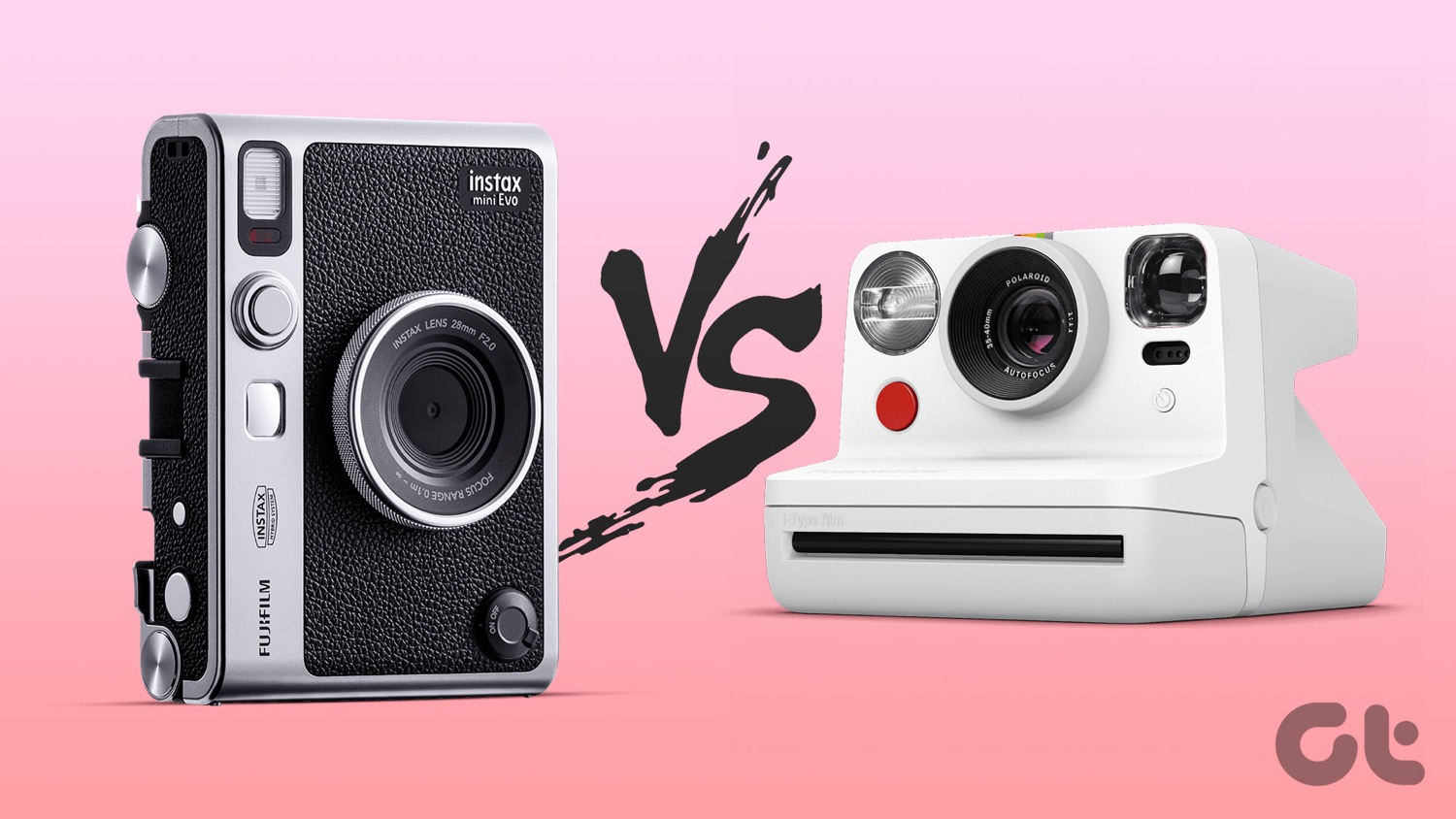With instant cameras, photography can turn out to be a fun experience. Imagine this—point your camera at a random object, slight blur on your background, press the shutter button, and you will have a physical photo in your hands in a matter of a few minutes. Well, if this thought excites you, look at the Fujifilm Instax Mini 11 and the Polaroid Snap.

These two are entry-level instant cameras and make photography a fun affair, both for adults and kids. They are both affordable and bring a simple and straightforward camera-system to the foyer.
While Fujifilm’s Instax Mini 11 is one of the new instant cameras from the company, Polaroid’s Snap has been around a couple a year for now, and needless to say, it has climbed up the popularity ladder in these few years.
So, how does the Instax Mini 11 compare against the Polaroid Snap? Well, we will find that out in this post today as we compare both the instant cameras and see which one is best suited for you.
Let’s get started. But before that,
- Here are the best digital photo frames with music
- Looking for instant cameras for kids, take a look at the best ones here
Specs That Matter
| Property | Fujifilm Instax Mini 11 | Polaroid Snap |
|---|---|---|
| Property | Fujifilm Instax Mini 11 | Polaroid Snap |
| Film Camera | Yes | No, users ZINK Paper |
| Photo Size | 2.44 x 1.81 inch | 2 x 3-inch |
| External Memory | No | Yes |
| Paper Capacity | 10 | 10 |
| Charging Method | AA Batteries | Rechargeable Battery |
| Selfie Timer | No | Yes |
| Selfie Mirror | Yes | No |
| Tripod Mount | No | Yes |
| Flash | Yes | No |
1. Design and Specs
If you want a slender and slim camera, the Polaroid Snap is your guy. It’s small enough to fit into the palms of your hands, and the slim factor adds to the experience. If we talk numbers, the Snap measures a mere 4.8 x 3 x 1.1 inches and weighs around 14 ounces.
This makes it perfect for small kids as well as for young adults. Similarly, it’s quite easy to operate. There’s a small viewfinder at the top that you can use to frame your shots, and once done, click. As simple as that.

The Polaroid Snap uses Zink photo paper to print your shots, unlike the instant film used by the Instax Mini 11. For those unaware, Zink photo paper uses heat to colorize and develop photos. The best part about them is that they are smudge-proof and water-resistant.
The rest of the design is also simple. The shutter button is at the top of the camera flanking the viewfinder and is accompanied by the special effects button and the selfie timer button.
The latter is one of Snap’s interesting features, for it allows you to change the tone of the photos you click. For example, if you want a monochrome photo or bathed in Sepia tones, you need to turn this button and shoot away. Your instant camera will do the rest of the job.

Interestingly, the Snap also gives you the option of adding the Polaroid signature white borders on the photos.
On the other hand, the Instax Mini 11 keeps things simple. Design-wise, it resembles the older Instax Mini 9, only this time it’s more sleek and slim than its older self.
However, its boxy design can be difficult to hold, especially for small children’s which isn’t a problem with the Snap.

Fujifilm has upgraded the Mini 11 with automatic exposure functionality, meaning you do not have to bother with setting the right exposure for your photos. So whether it’s a night shot or a day-time shoot, your camera will auto-adjust the exposure and the brightness accordingly.

Interestingly, the flash is always-on on the Mini 11 and will fire automatically each time you press the shutter button. Other than that, there are not many changes. It’s still a film camera, and there’s no provision for external memory. Neither is there any option to time your selfies.
However, what is does have is a cool selfie mode. For that, all you have to do is pull out the lens barrel, turn the camera towards yourself, and film your shot. As easy as that.
2. External Memory vs Selfie Mode
These two modes are two of the extreme features of both the cameras. Since the Snap is not a traditional film camera, it gives you the flexibility of storing every photo you shot in a digital format in an external SD card.
Once you stick the card in, the Polaroid Snap will need to store every 5-megapixel photo in the card. This gives you the flexibility of printing the photos from a full-featured photo printer. Of course, you will not get the sharp quality of a DSLR camera or a smartphone camera, but the good thing is that at least you will have a backup of all your lovely memories.

On the downside, the Polaroid Snap doesn’t give you the option of ‘store-only.’ This means it will print every photo you click.
As opposed to it, the Fujifilm’s Instax Mini 11 doesn’t have any such fancy features. Instead, it brings home the aforementioned selfie mode or close-focus mode.
Here, you need to pull out the lens barrel and click selfies. The variable focus means that your face will be in full focus with a slight blur on your background. What makes it even more interesting is that you can use it to frame close-focus shots as well. It’s worth noting that though the Instax 11 doesn’t have a selfie-timer, it has a neat selfie mirror on the lens barrel. Good enough, right?
Unlike the Snap, you do not get to change photos mid-way into monochrome shots or sepia shots. Instead, you’ll have to go a long way and get the needed films for the camera and shoot away.
3. Charging Methods & Battery
Like any digital camera, the Snap is also powered by a rechargeable battery unit. A MicroUSB port on the side lets you recharge the battery, and a single charge gives you around 20 prints at the max.
Though the rechargeable battery option is a boon (less e-waste), you won’t be able to click photos when you run out of battery, and the battery is charged again.

As opposed to it, the Instax Mini 11 runs on two AA batteries. A new set of charged batteries yields around 100 shots. Great right? And the good news is that even if you are on a photo- shooting spree, carry a pair of rechargeable batteries with you, and you will be sorted.
4. Instant Film vs. ZINK Photo Paper
One of the best things about ZINK paper is its pricing. Compared to regular films, ZINK photo paper is priced less. A packet of ZINK photo paper pack (50 sheets) costs $23.99.
Aforementioned, ZINK paper uses heat to develop the picture instantly. These papers are waterproof and are adhesive-backed. Though they are durable, they are considered a tad inferior to films as the photos tend to come out darker.

Thankfully, the Polaroid Snap churns out bright and vivid photos and is decent enough to be gifted to friends & family. Even in bright daylight, you won’t see the overexposed sky or blown up details. Needless to say, you won’t see the same amount of sharpness that a true digital camera brings to the table.
On the other hand, printing the photos is as simple as pressing the shutter button on the Instax Mini 11. The photos are pleasing to look at and are natural. They are bright and vivid, and unlike its older self, here you won’t see darker backgrounds or blown-up sky.
Also, when it comes to photo paper’s price, a very basic two-pack for the Instax Mini 9 costs around $14.75.
Which One Should You Buy
The Fujifilm Instax Mini 11 and Polaroid Snap are very different instant cameras, and your pick should depend on the type of functionality you want. If you want a point and shoot camera that spits out photos as soon you click on the shutter button, the Instax 11 should do the trick for you.
It lets you click selfies and allows you to focus on objects as well. However, when it comes to extra features, it doesn’t have much to exhibit.
On the other hand, the Polaroid Snap gives you a mode to backup your frames and shots. Plus, it’s also much easier to hold and use. However, it has been a few years since it was launched.
When it comes to instant cameras, it involves more than just the camera. Here, you have to calculate the overhead film costs and the quality of photos it churns out.
So, it’s up to you to decide—if you’d want to go for a ZINK paper-based instant camera that’s cheap or a film-based camera that delivers natural photos.
Last updated on 02 February, 2022
The above article may contain affiliate links which help support Guiding Tech. However, it does not affect our editorial integrity. The content remains unbiased and authentic.











